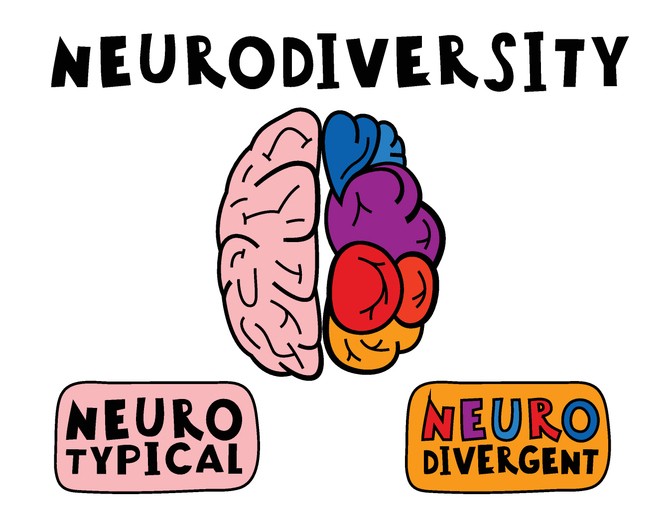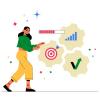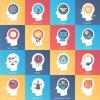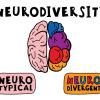
Yeah, So Everything You Use at Work Was Built for a Brain That Doesn't Exist
Most workplace tools are designed for people at their best — 🟢 Green Zone capacity. Peak focus. Full regulation. That mythical person who doesn't actually exist when you need help the most.
Look, I'm writing this at 11 PM after my third meeting ran over and someone asked me to "circle back on the synergies" for the fifth time today. My brain is fried. And that's exactly when I realized — this is when I need tools that actually work, and it's also when everything built for "peak performance" completely collapses.
You know the ones. Training videos that assume you can focus for 45 minutes straight. Project management apps with 47 dashboards. The wellness reminder that cheerfully suggests a "mindful moment" while you're mid‑meltdown in a bathroom stall.
None of this works when you're not in 🟢 Green. Most of us are trying to use it from 🟡 Yellow or 🔴 Red.
Here's What Nobody Wants to Admit
Most workplace tools were built for brains in optimal mode. But Zones shift. And when stress spikes, your brain literally rewires how it functions.
If you have ADHD, autism, dyslexia, or any neurodivergent wiring, you already know the emperor has no clothes. Those tools weren't just not built for you — they work against your brain under stress.
Here's the kicker: build for the hardest case first — the ND brain under load — and you accidentally design for everyone under pressure. Because a neurotypical brain at ~8/10 stress functions a lot like an ADHD brain at baseline.
Two Routes, all brains: Neurotypical (NT) · Neurodivergent (ND). Routes show how your brain is wired. Zones show how much capacity you have right now.
Toxic workplaces, office politics, and systems problems? That's not brain wiring — that's navigating broken environments. Those tools live in the Communication, Stress Management, and Emotional Mastery Pillars.
We're all struggling with the same broken tools. Some of us just hit the wall faster.
What "Neurodivergent‑First" Actually Means (Hint: It's Not Dark Mode)
Accessibility isn't an afterthought. It's the foundation. ND‑first design means you build for the hardest day, not the best one.
The Stuff That Actually Matters:
Assume I Remember Nothing
Traditional design: "As we covered in onboarding..."
ND‑first: Every tool includes its own instructions. Every time. Because memory isn't reliable when bandwidth is low.
Assume My Executive Function Is Offline
Traditional design: "Choose from 12 options!"
ND‑first: One clear next step. If I could make good decisions, I wouldn't be doom‑scrolling Slack right now.
Assume My Capacity Changes Hourly
Traditional tools assume a steady state. Real humans fluctuate.
In 🟢 Green Zone you can handle complexity. In 🟡 Yellow, you need simplicity. In 🔴 Red, you need triage. ND‑first tools flex automatically based on where you are.
The Two Routes: How Your Brain Is Actually Wired
Route NT — The Neurotypical Route
What it feels like: Catastrophizing, overthinking, impostor spirals, running mental reruns of that one meeting three years ago. Your stress lives in your head.
How your brain works: Standard arousal regulation that goes offline under high stress. Your thoughts drive your emotions. Cognitive patterns create your stress response.
Tools: Fact vs. Story · Thought Records · Micro-actions · Cognitive reframes
👉 Confidence & Calm Under Pressure
Plus: When you hit 🔴 Red Zone stress, you can borrow ND Route tools — because a neurotypical brain at 8/10 stress looks exactly like an ADHD brain at baseline. Same executive function issues. Same working memory problems. Same emotional dysregulation.
Route ND — The Neurodivergent Route
What it feels like: Overwhelm, masking fatigue, energy crashes from too many back-to-back calls. Executive function offline. Sensory overload from "normal" workplace demands. Hyperfocus for six hours or staring at a blank document — no in-between.
How your brain works: Arousal dysregulation — you move through Zones faster, downregulate slower, struggle to return to baseline. Your brain processes more in the background, needs explicit structure, and doesn't filter sensory input the same way. ADHD, autism, dyslexia, sensory processing differences — your brain doesn't run factory settings.
Tools: Environmental Tweaks · Pacing Strategies · Sensory Kit · Explicit instructions (assumes you remember nothing) · External structure and timers · Body-based regulation
👉 Focus & Self-Management Skills
Finally, tools that don't make you feel broken. Work WITH your wiring instead of fighting it.
The Curb‑Cut Thing Everyone Mentions
ND‑first design is the cognitive curb cut. Build for accessibility, and everyone benefits — especially in 🔴 Red Zone.
When you design for ADHD memory gaps, you help every tired parent who's slept four hours.
When you design for autistic clarity, you help everyone overwhelmed by ambiguity.
When you shorten text for dyslexia, you help everyone skimming emails between meetings.
Build for ND brains under stress → every brain in 🔴 Red performs better. Learn how stress mastery tools work across Routes.
Why This Isn't Happening Everywhere
Because it's harder. And most systems still build for the imaginary employee at full capacity.
Creating flexible tools for changing capacity requires empathy, testing, and actual ND leadership — not advisory panels and pizza parties.
What We Built (Because Someone Had To)
We built Emergent Skills — 10 life‑skills pillars designed ND‑first, tested under pressure, and adaptable for both Routes.
When you build ND-first:
- NT brains in 🔴 Red Zone get tools that actually work when thinking is hard
- ND brains get infrastructure built for how they actually function
- Everyone gets tools that scale to current capacity, not imaginary peak performance
We even have a ⚫ Can't‑Even Mode. Because sometimes you literally can't even. And that's data, not failure.
Ready for Tools That Actually Work?
Try the free 30‑minute reset. Built for brains that are tired, overloaded, and human.
Annual is $299 — less than you've spent on productivity apps that stopped working three days in.














